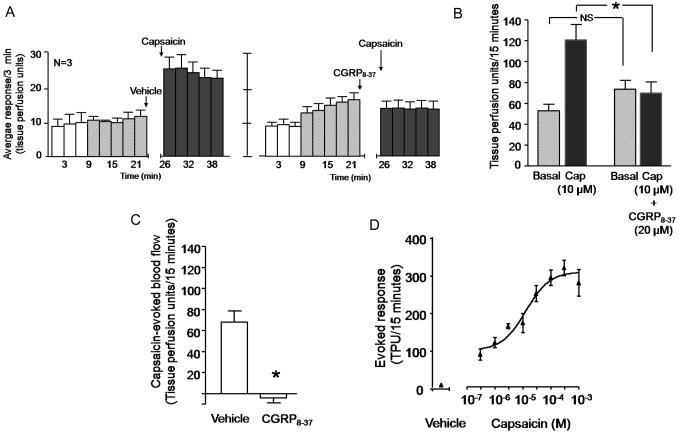Figure 1.
Capsaicin-induced vasodilatation in the hindpaw of the rat is blocked by the CGRP receptor antagonist CGRP8-37. In all cases, each column represents the mean ± SEM. A: The open columns and the hatched columns represent basal blood flow before and after the injection needle is inserted intradermally. The shaded columns represent blood flow after injection of vehicle then 10 μM capsaicin (left panel) or 20 μM CGRP8-37 then capsaicin (right panel). B: Blood flow in tissue perfusion units over the 15 min prior to injection of vehicle or CGRP8-37 (hatched columns) and the 15 min after injection of capsaicin (shaded columns) from figure A. C: Capsaicin-evoked changes in blood flow over 15 minutes (capsaicin-stimulated blood flow minus basal blood flow from figure B) in vehicle- or CGRP8-37–treated rats. In B and C, an asterisk indicates statistical significance between the CGRP8-37–injected group and the vehicle-injected group. D: Each point is the mean ± SEM evoked blood flow in TPU/15 min for vehicle or various concentrations of capsaicin injected into the hindpaws of 3-4 rats.

